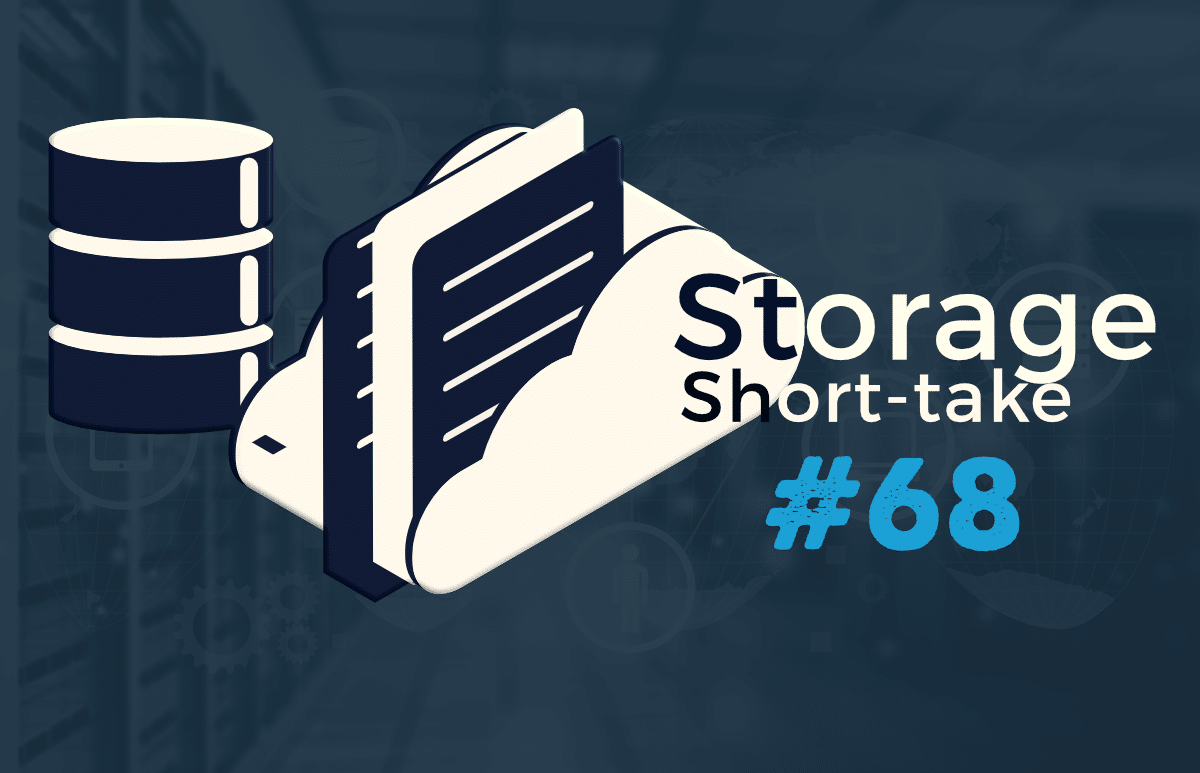
In less than 2 weeks the SNIA Storage Developer Conference will be underway, and it's going to be one of the biggest ones we've had (session-wise). Last year, my favorite Keynote was done by Gary Grider, whose talk on computational storage and the work that goes into simulating nuclear explosions was absolutely fascinating.
This year, we've got a number of keynotes that I'm looking forward to (and I am a person who typically hates Keynotes, so that's saying something), but the one that I'm particularly keen on watching is Mark Fernandez' "Storage in Space" one.
Of course, being Chair, I've got to give my obligatory remarks to open on Tuesday's sessions. And yet, that's just the thing, isn't it? The very reason why I hate keynotes is because these things are so boring. Rah, rah, rah, aren't we special, yeah, yeah, yeah; blah, blah, blah.
sigh
All of this, I find particularly stressful. How do you entertain the audience, get them hyped for the sessions to come, get across the obligatory 'SNIA Is Doing Great Things™" speech when everyone just wants you to...

I suppose we'll just have to see. Perhaps you can come see for yourself, in fact!
Hecklers welcome.
In the meantime, there's been quite a bit of news in the storage world. There is a lot of new media technology in this one. As usual, links were valid at the time of publication.

Storage Media and Technology
These tool-less drive trays are even better than Synology's. Definitely want, especially for HDDs.
Paul Speciale of Scality has a blog on the power efficiency debate between HDDs and SSDs. They claim to not have a dog in this hunt because they support both types of drives, so I read on. I found the basic principles far more compelling than the somewhat curious sample drives that were used for comparison.
Sameer Danave has written a blog for StorageNewsletter on the Seven Disruptive Trends in Storage Industry [sic]. While I don't necessarily disagree with what he wrote, I didn't find anything particularly earth-shattering or novel. I also don't see them as "changes" as much as issues that are becoming more important to consider as needs and requirements evolve.
Congratulations to Swapnajit Chakravarty, who received a $540k grant to study how to improve data storage capability. As I read through the press release, though, I have to wonder about the breadth of the work. From automotive to quantum computing to AI to manufacturing, there's a lot going on with many touch points. Outside of that, he's got some other projects that are only tangentially related. In any case, I do wish him luck and hope he can make progress.
What's the life expectancy of a drive? I have to confess, I found this article somewhat disappointing. While I can't find fault in the facts presented, I think they could have spent more time understanding how to make the determination based upon those facts as to which to use for which jobs.
I've long said that Tape will never go away. but I find articles like these absolutely infuriating. If you don't care about the integrity of your data, or the usefulness of the archive medium, whether it's compatible with your deployment needs, how much it costs, or whether or not you even have a medium that works, then sure. Go ahead and base your decision on a 'carbon footprint.' At best, it's a 'nice to have', emotionally-gratifying "what a good boy am I" data point, but it should never be a primary decision factor.
Speaking of Tape, welcome to the world of 150TB of compressed tape capacity.
What's the most common SSD or HDDs in use today? SATA or NVMe? IDE? The answers will shock you! (sorry, couldn't resist)
What are "DNA chips," and why are they the "media of the future?"
It's a good question, but it's the wrong one. "How long does data last on a USB flash drive" is not nearly as useful (or important) as, "how long should you expect data to last on a USB flash drive?" I have USB gum stick drives with data that have lasted for no less than 10 years. At the same time, I have an equal amount of USB gum stick drives that have lasted less than 6 months. I expect 6 months, and then anything after that is gravy.
IDC has written a white paper, sponsored by Box, on What Every Executive Needs To Know About Unstructured Data (pdf). As the title suggests, this is not about how to deal with unstructured data, but rather deals primarily with "other people are using it <this> way" and "here are some policy decisions you should think about."
Blocks & Files has a really good summary of Tom Coughlin & Jim Handy's breakdown of emerging memory technologies.
Storage Companies in the News
You can read the class-action lawsuit against Western Digital for yourself.
The Broadcom acquisition of VMware is expected to close October 30.
Speaking of legal woes, a former VP and GM of NetApp is suing the company for not only wrongful termination, but accuses them of "racketeering activity" (p. 3).
Micron CEO and President, Sanjay Mehrotra, has been awarded the Robert N. Noyce Award from the Seminconductor Industry Association (SIA). It's worth noting that Sanjay received the Flash Memory Summit Lifetime Achievement Award in 2019 (apparently didn't rest on those laurels!).
Never forget that "unlimited" policies are never "unlimited."
Rumors have it that OpenZFS 2.2 is nearly here.
Synology has fixed a low-priority SSL VPN client security issue.
Industry Associations and Standards
Webinars, Blogs, and Conferences
Supermicro held their fourth annual "Open Storage Summit" last month, which included a session (shameless plug for a colleague!) on AI Storage Solutions. Free registration is required, but I recommend using a pseudo-anonymous emailer to help cut down on future spam.
Chin-Fah Heoh has a good blog on the mindset of Enterprise storage. While he sprinkles a liberal amount of his company (iXSystems) solutions, it's still good good first principles.
Jim Handy's blog took a serious hit from an AI Feeding Frenzy.
Chris Evans has an important take on the Cisco-Nutanix partnership: "Try before you buy."
Bonus Round
In the 1940s and 1950s, there were few comedic stars as big as Jack Benny. While in real life he was a generous soul with incredible talent, his character was known to be super-cheap and miserly, lie about his age, and play the violin horribly. The true magic of Benny's success, though, came from his legendary supporting cast.
One of those was Mel Blanc (best known for his Warner Brothers cartoon voiceovers for Bugs Bunny, Yosemite Sam, Daffy Duck, Sylvester & Tweety, etc.). But Blanc was an incredible deadpan comic as well that rivaled even the great Jack Benny.
